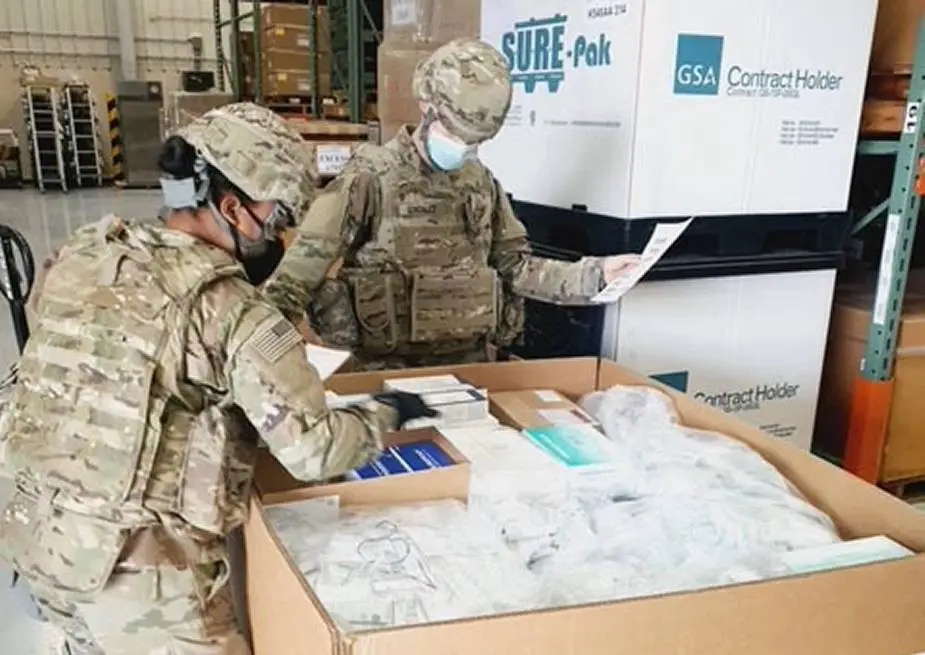Breaking news
Artificial intelligence symposium gives US MEDLOG experts platform to improve sustainment.
The U.S. Army is continuing to consider ways artificial intelligence, or AI, can augment and improve current operations for sustainment enterprises, including medical logistics. C.J. Lovelace, U.S. Army Medical Logistics Command, reports.
Follow Army Recognition on Google News at this link

Pvts. Trezia Davenport and Alan Gonzalez, assigned to the 563rd Medical Logistics Company, assemble a tactical combat medical care resupply set in support of U.S. Forces Korea during an exercise at the Army’s prepositioned stocks site in South Korea. (Picture source: U.S. Army/Staff Sgt. Anthony Peterson)
Lt. Col. Marcus D. Perkins, immediate past commander of the U.S. Army Medical Materiel Center-Korea (USAMMC-K), took part as a panelist and medical logistics subject-matter expert during the virtual 2022 DOD Digital and AI Symposium in June. USAMMC-K is a direct reporting unit to U.S. Army Medical Logistics Command. AMLC is the Army’s premier medical logistics organization, serving as the Class VIII Life Cycle Management Command. It delivers medical readiness to the force while executing medical materiel management functions for combatant commands in order to set and sustain operational medical capabilities.
Perkins, who focused on AI technologies that assist in the management of raw materials to address vulnerabilities within the global supply chain, was one of numerous panelists and speakers who participated in the two-day event attended by about 1,400 people. “It was an awesome and rewarding experience for me,” he said. “I believe I brought command experience as an end-user that was caught in the position to manage critical medical materiel during a global pandemic and during supply chain shortages.”
Maj. Y. Brian Lee, with the Office of the Secretary of Defense’s Chief Digital and Artificial Intelligence Office, or CDAO, which hosted the event, led the Advanced Analytics in the Supply Chain panel discussion. “The symposium was a great platform to introduce the CDAO to the world, with key DOD leaders, such as Dr. Kathleen Hicks, the deputy secretary of defense, providing insight into the roles and responsibilities of the CDAO,” Lee said. “The CDAO will bring a new operating model to the business of digital transformation, data analytics and artificial intelligence.”
For his portion, Perkins said he provided a first-hand account of the medical materiel challenge experiences during the COVID-19 pandemic response on the Korean Peninsula, as well as the discussed lessons learned and a better way forward in the future. “In addition, we mapped the entire supply chain from factory to foxhole to look for areas of improvement,” he added.
One of the biggest challenges, Perkins said, continues to be a lack of communication between supply chain information systems. The current systems “talk past each other,” rather than interface seamlessly, thus creating a readiness gap.
“I believe the industry can use this technology at the industrial base and executive agency level to see both predictable and unpredictable influencers (in the supply chain),” he said. “It’s important to remember that DOD is a very small part of the global/U.S. medical supply chain, so we need to be ahead of the rest of the groups to see and predict these shortfalls. Not doing so will cost us lives. We cannot remain reactive.”


























